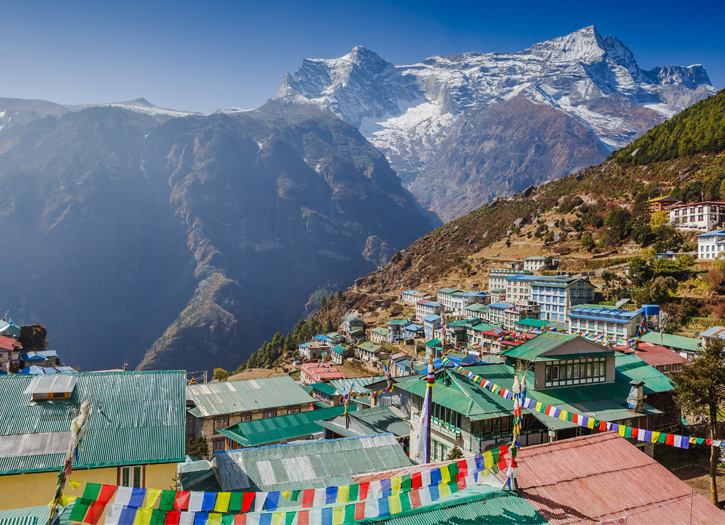The COVID-19 pandemic in Nepal is part of the worldwide pandemic of coronavirus disease 2019 (COVID-19) caused by severe acute respiratory syndrome coronavirus 2 (SARS-CoV-2). The first case in Nepal was confirmed on 23 January 2020 when a 31-year-old student, who had returned to Kathmandu from Wuhan on 9 January, tested positive for the disease. It was also the first recorded case of COVID-19 in South Asia. Between January and March, Nepal took steps to prevent a widespread outbreak of the disease while preparing for it by procuring essential supplies, equipment and medicine, upgrading health infrastructure.
As of 13 September 2020, the Ministry of Health and Population (MoHP) has confirmed a total of 54,159 cases, 38,697 recoveries, and 345 deaths in the country. In the meantime, 840,527 PCR tests have been performed in 40 laboratories across the country. The viral disease has been detected in all provinces and districts of the country, with Province No. 2 and Kathmandu being the worst hit province and district respectively. As for Nepalese abroad, the Non-Resident Nepali Association has reported a total of 12,667 confirmed cases, 16,190 recoveries, and 161 deaths across 35 countries.
On 22 March 2020, the Ministry of Culture, Tourism, and Civil Aviation (MoCTCA) called off the Visit Nepal Year 2020 campaign. Nepal’s economy is expected to be severely affected by the pandemic due to its impact on foreign employment, tourism, manufacturing, construction and trade. The World Bank has warned that the pandemic could push about one-third of the country’s population below the International Poverty Line (i.e., $1.90 per day).
The pandemic has led to severe global economic disruption, the postponement or cancellation of sporting, religious, political and cultural events, and widespread shortages of supplies exacerbated by panic buying. Schools, universities and colleges have closed either on a nationwide or local basis in 73 countries, affecting approximately 72.9 percent of the world’s student population. Misinformation about the virus has spread online. Due to reduced travel and closures of heavy industry, there has been a decrease in air pollution and carbon emissions. On 29 February, the government formed a high level committee to prevent and control the spread of COVID-19 under the leadership of Deputy Prime Minister Ishwar Pokhrel.On 20 March, the Health Ministry instructed public employees to report on weekends as well, and not leave the Kathmandu Valley. The government declared a Rs 500 million fund with contributions of a month’s salary from government ministers.
Nepal announced suspension of visa-on-arrival service for nationals of five countries badly affected by COVID-19 – China, South Korea, Japan, Italy and Iran – to be enforced from 7 to 30 March.From 2 March, the visitors coming from or via countries with multiple cases of the disease were required to submit a health certificate. Health checkpoints began to be established at all major entry points from India, and third country citizens were allowed to cross from select border check-points only. The government issued a travel advisory against non-essential travel to countries hardest hit by the disease, including China, Iran, South Korea, Japan and Italy.
Nepal decided to suspend on-arrival tourist visa for all countries, with an exception to diplomatic and official visas, to last from 14 March till 30 April. On 19 March, the government declared suspension of all classes and postponement of all academic examinations including the Secondary Education Examination until 12 April, the end of the Month of Chaitra, the last month of Nepali calendar year when all schools hold the final examinations.Tribhuvan University and the Public Service Commission also postponed all their examinations.All government services and private offices except those providing essential services were closed.
The domestic airlines were reported to be struggling for survival as ticket prices dropped to half or a third of normal following a sharp decline in demand. Number of international flights to and from Nepal had decreased by more than 50% by 13 March. As emigration for foreign employment came to a halt, airlines were forced to suspended flights to several labour destinations. Nepal’s import-dependent economy is also vulnerable to depreciation of Indian currency to which its currency is permanently pegged, as Indian economy suffers the impact of the pandemic.







Add Comment